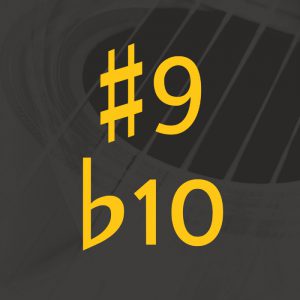 The chords consisting of c, e, g, b flat and e flat (or d sharp), how is it notated? In the States most musicians will write
The chords consisting of c, e, g, b flat and e flat (or d sharp), how is it notated? In the States most musicians will write C7>9
. In The Netherlands however, it is common to notate it as C7<10
. And in the early days of jazz the latter way of writing seems to have been more common in the States as well.
How do we choose between these two? Both the notations C7>9
and C7<10
make sense. If you argue chords are built from thirds, you would prefer the first way of writing. The note d*
then is a raised ninth. If you perceive this harmony as a major chord with a flavor of minor in a major chord, you would prefer to notate the harmony as a major-minor chord, thus as C7<10
. Neither of these views is better than the other. I think both interpretations are equally true.
But having two ways of notating a single harmony isn't wise. If we all use the same signs, writing and reading chords will be easier and faster. Apparently in the States musicians settled for the *9
version. If you ask me, in The Netherlands we better conform to that notation method as well.